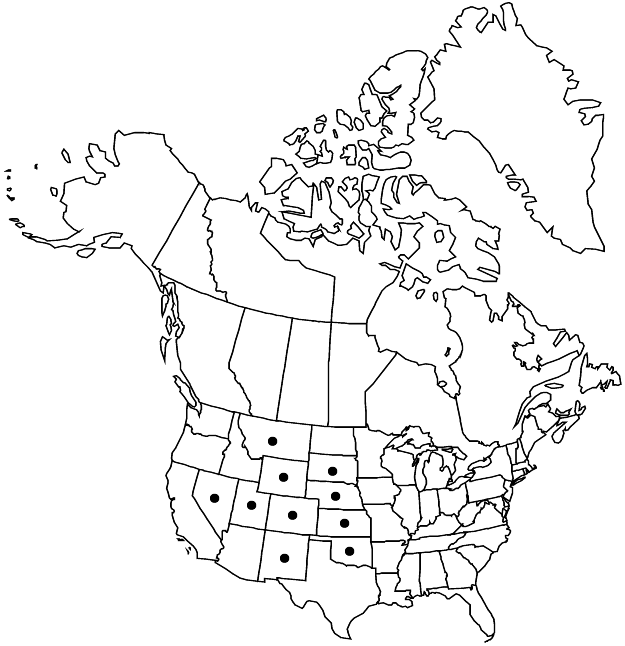Eremogone hookeri
Brittonia 33: 326. 1981.
Plants densely or loosely matted, green, not glaucous, somewhat woody at base. Stems erect, 1–15(–20) cm, scabrid-puberulent. Leaves: basal leaves persistent; cauline leaves in 1–4 pairs, usually little overlapping, often larger than basal leaves; basal blades straight to arcuate-spreading, subulate to needlelike, 0.3–4 cm × 0.5–1.5 mm, flexible or rigid, herbaceous, apex spinose, glabrous, often glaucous. Inflorescences 3–30+-flowered, congested, capitate or subcapitate cymes. Pedicels 0.2–2 mm, scabrid-puberulent. Flowers: sepals 1–3-veined, often obscurely so, linear-lanceolate to lanceolate, (5–)6–10 mm, not enlarging in fruit, margins narrow, apex narrowly acute or acuminate, glabrous or pubescent; petals white, oblanceolate, 4.5–8.5 mm, ± equaling sepals, apex rounded to obtuse; nectaries as lateral and abaxial mounds with transverse groove at base of filaments opposite sepals, 0.2–0.3 mm. Capsules to 4 mm, glabrous. Seeds black, ellipsoid-oblong to pyriform with hilar notch, 1.8–2 mm, tuberculate; tubercles rounded, elongate.
Distribution

Colo., Kans., Mont., N.Mex., Nebr., Nev., Okla., S.Dak., Utah, Wyo.
Discussion
Varieties 2 (2 in the flora).
Selected References
None.
Key
| 1 | Basal leaf blades 0.3-1.5 cm, straight or recurved, rigid; sepals 5-8(-9) mm | Eremogone hookeri var. hookeri |
| 1 | Basal leaf blades 2-4 cm, straight, rigid or flexible; sepals (7-)8-10 mm | Eremogone hookeri var. pinetorum |